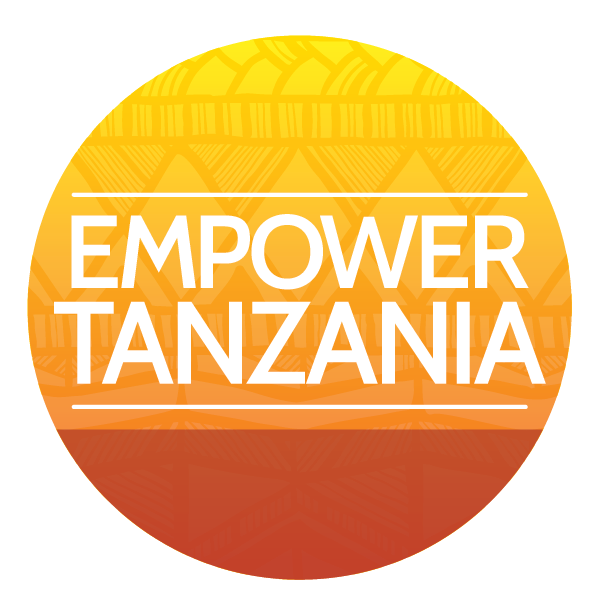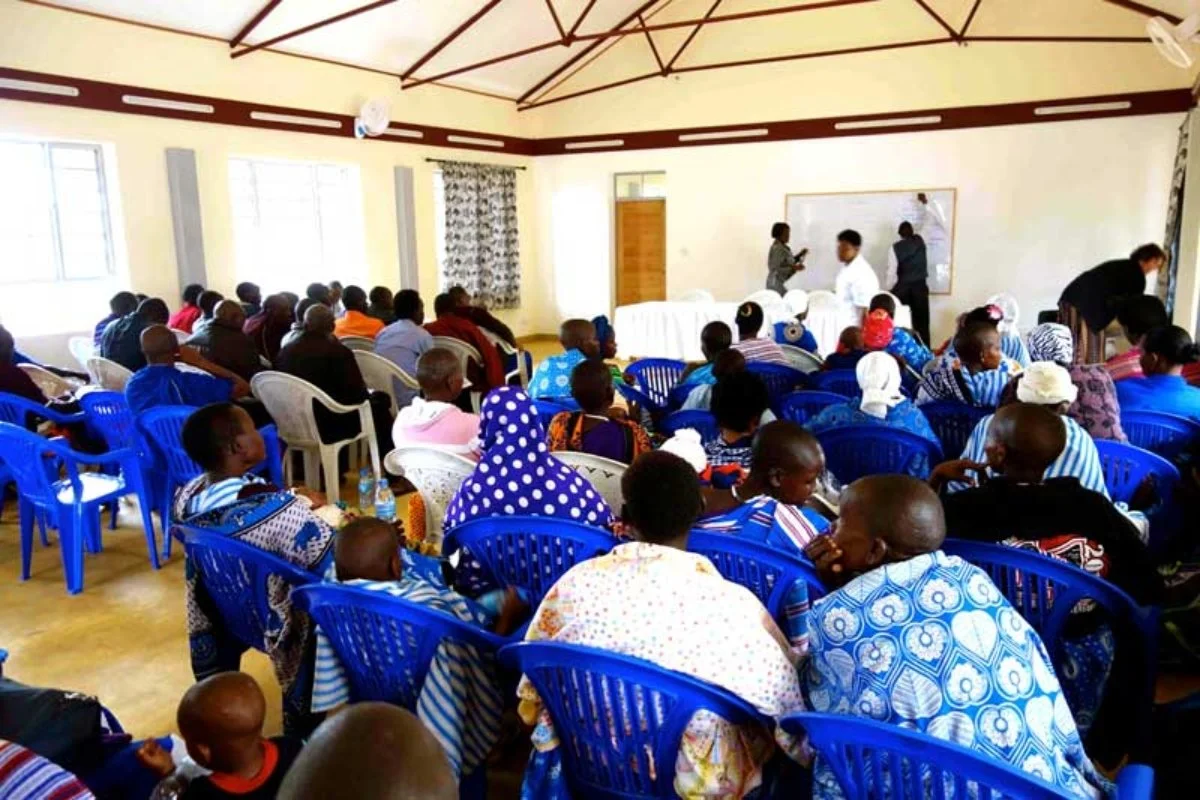Maasai Men in Training - A Song of Appreciation
After a year spent serving the people of their villages, our 30 female Community Health Workers (CHWs) felt that training men from their communities would help the Community-Hospital Alliance Program (CHAP) gain momentum and respect. What follows is a report from CHAP program director Jeff Carithers, MD, who led a delegation that spent two weeks this summer providing additional training for our 30 Community Health Workers and, at their request, 30 men from their villages. This post is part of an in-depth look at CHAP. To learn more about the program, please refer to News & Events.
A group of 30 Maasai men were in a semicircle about eight feet in front of me slowly bouncing on their feet and thrusting their chests to a rhythm of chants and deep grunts. The sounds resonated against the hard surfaces of the room we were in, almost overwhelming the space. Their faces were stern, and the threatening postures and sounds during the chant were punctuated by a concluding loud shout and jump at me. Even though I knew the men fairly well, the laughing that followed this show was a great relief. Rather than a threat, this demonstration of appreciation marked a new high water of trust between the Maasai men and our delegation with the common goal of improving the health of their community members.
On the last day of the training for our 30 female CHWs this summer, we were joined by 30 Maasai men who then stayed for two additional days of training on their own. Like the women, their fellow villagers selected the men as individuals who would be the most likely to effectively learn and distribute the knowledge imparted in the training.
The day of joint training of the men and women was opened with greetings from Maasai Councilor Kiboko, a representative of the local government, Maasai Chief Isaya, Bishop Mjema of the Pare Diocese of the Lutheran Church and members of the Empower Tanzania delegation. Each of the presenters emphasized the program goals of improving Maasai health and made a point to tell the men that the iPads that had been distributed in the days before are for education and should be left with the women.
The joint training then proceeded with education about family planning. The women were outspoken in saying that they were afraid to discuss this with their husbands. One of them said, “A few years ago, my husband was with our cattle for several months at a time. Now he is around a lot and demands sex more often. I cannot space the births of my children as I used to.” The men minimized this problem and one of them said, “The Bible says we should multiply and fill up the Earth.” The faculty responded, “It doesn’t say that you have to do this all by yourself.” Laughter often ended these open exchanges among the attendees.
Presentations and discussion of HIV/AIDS, prevention of maternal to fetal transmission of HIV, and female genital mutilation followed. Education about the health risks of the practice of female genital mutilation was well received and openly discussed among the men and women.
The men’s training continued with a program on latrine building presented by a government representative. Government regulations require latrines to be dug 12-feet deep with sloped sides to reduce the risk of collapse. There are also requirements about flooring construction, so latrine construction turns out to be a significant undertaking. The men had some experience with latrine building and expressed desire to spread the practice.
I then taught about cholera and malaria prevention and discussed the culturally sensitive topics of HIV/AIDS, family planning techniques, and female genital mutilation with the men alone, as the women had returned to their villages. By this point the men were becoming more comfortable with the situation and topics. It was satisfying to have good questions, insightful comments, and humor during the discussions. We also addressed nutrition, gender-based violence, and the negative health impacts of alcohol, smoking, and superstition.
The group was particularly interested in learning details about methods of contraception and it presented a chance to counter many myths. I was pleased with how well the information about medical complications of female genital mutilation was received since this will hopefully promote elimination of the practice. It was at the conclusion of this eventful day that the Maasai sang their song of appreciation described above.
The men appeared to grasp the program concept and potential reach in their villages. They pledged their support of the women CHWs and program goals. It is well known that when a Maasai says “yes,” he means yes, and when he says “no,” he means no. Their response was a resounding “Yes!” Empower Tanzania is not simply providing a bandage and then heading home. Rather, through CHAP and programs like it, we are educating rural Maasai women (and men!) so that they can care for the people of their community with the skill and knowledge that is theirs forever. CHAP provides EDUCATION and EMPOWERMENT. Stay tuned for Part V of our series!




